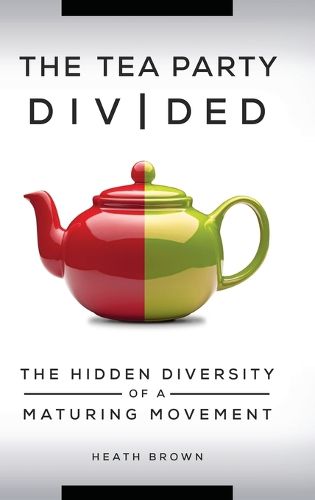Readings Newsletter
Become a Readings Member to make your shopping experience even easier.
Sign in or sign up for free!
You’re not far away from qualifying for FREE standard shipping within Australia
You’ve qualified for FREE standard shipping within Australia
The cart is loading…






Unlike previous books on the Tea Party, this work looks at the second phase of party growth to show that what was once considered a monolithic movement is truly a collection of different opinions.
Since the Tea Party exploded onto the American political scene, it has matured and changed, but the differences that now exist within the movement are largely unacknowledged. A more nuanced understanding is called for. Previous treatises have sought explanations for the rise of the movement and focused primarily on its early days. This book, in contrast, focuses on understanding the diversity within the party, challenging the notion that the Tea Party is a homogeneous political movement defined mainly by its ultra-conservatism, regionalism, and rigid political orthodoxy.
To accurately depict the Tea Party as it exists today, the book explores how the party evolved from its first phase to its second, examining important distinctions in terms of who has joined and who has served in Congress and other offices. Differences in Tea Party organizations around the country are examined and their funding sources considered. The book also explores the political positions taken by Tea Party members, looking at the voting records of party legislators to see if they’ve adhered to stated movement objectives. Finally, and perhaps most intriguingly, the author speculates on what this all means and suggests possible futures for the diverse Tea Party strands.
Looks at the differences in Tea Party organizations around the country, including their funding sources
Analyzes the political positions taken by party members and the voting records of congressional Tea Party legislators
Shows the variations among Tea Party members, including regional, gender, and issue differences
Analyzes Tea Party campaign spending and funding sources
Offers predictions about the party’s future
$9.00 standard shipping within Australia
FREE standard shipping within Australia for orders over $100.00
Express & International shipping calculated at checkout
Stock availability can be subject to change without notice. We recommend calling the shop or contacting our online team to check availability of low stock items. Please see our Shopping Online page for more details.
Unlike previous books on the Tea Party, this work looks at the second phase of party growth to show that what was once considered a monolithic movement is truly a collection of different opinions.
Since the Tea Party exploded onto the American political scene, it has matured and changed, but the differences that now exist within the movement are largely unacknowledged. A more nuanced understanding is called for. Previous treatises have sought explanations for the rise of the movement and focused primarily on its early days. This book, in contrast, focuses on understanding the diversity within the party, challenging the notion that the Tea Party is a homogeneous political movement defined mainly by its ultra-conservatism, regionalism, and rigid political orthodoxy.
To accurately depict the Tea Party as it exists today, the book explores how the party evolved from its first phase to its second, examining important distinctions in terms of who has joined and who has served in Congress and other offices. Differences in Tea Party organizations around the country are examined and their funding sources considered. The book also explores the political positions taken by Tea Party members, looking at the voting records of party legislators to see if they’ve adhered to stated movement objectives. Finally, and perhaps most intriguingly, the author speculates on what this all means and suggests possible futures for the diverse Tea Party strands.
Looks at the differences in Tea Party organizations around the country, including their funding sources
Analyzes the political positions taken by party members and the voting records of congressional Tea Party legislators
Shows the variations among Tea Party members, including regional, gender, and issue differences
Analyzes Tea Party campaign spending and funding sources
Offers predictions about the party’s future